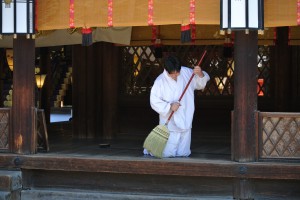
Cleanliness is next to godliness
Shinto purification
In Shinto there’s no good and evil in a moral sense, but instead there is the idea of purity and pollution. Whereas the kami live in a realm of absolute purity, life in the material world inevitably results in impurity. So we need purification in order to return things to their pristine condition. A common analogy is that the soul is like a mirror on which the dust of the world settles, rendering it unclear. By cleaning away the dust, the mirror is restored to its natural shining state.
Purification can take different forms. There is the symbolic washing of hands before entering a shrine. There is the waving at rituals of the haraigushi (wand with paper streamers), in order to sweep away impurities. And there is the ritual immersion of the body in cold water (misogi), so as to purify the soul. In the past miko shamanesses were meant to be pure and virginal, while still today before major rituals priests purify themselves by abstaining from meat and practising other austerities.
The concern with purity is evident elsewhere too, including the Japanese obsession with cleanliness and hygiene. Salt is used after funerals to keep away evil spirits (it’s used too at sumo to cleanse the ring). Houses and cars are protected by ritual purification. In terms of character too, Shinto values purity of heart, as expressed in sincerity, honesty and dedication.
Pagan practice
As in Shinto, paganism sees purity as safe and life-affirming, while ‘pollution’ is harmful. Ritual tools are purified by water, incense, salt and fire. In Wicca the witch’s circle is symbolically sealed as sacred space by means of a ceremonial sword or athame, which cuts through evil.
The Christian concept of purity and impurity differs in emphasis. For paganism, impurity is conceived as inherently hostile to humans and gods. In the Bible this is replaced with a concern for purity of belief and the concept of sin. Good and evil are what matter most. By contrast, ‘An ye harm none, do as thou wilt’ is the pagan philosophy.
Rather than ethics, it is the idea of ‘energy’ that drives neo-pagan and New Age spirituality. This may take the form of heightened energy, as in rituals and trance dance, or the dispelling of negative energy as in healing and cleansing rituals. Helping energy flow freely and be free of pollution or blockages is a major concern.
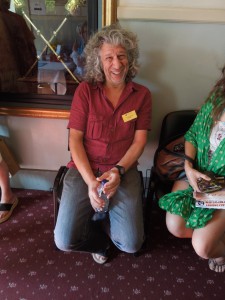
Christian Kyriacou
The House Whisperer
Two days ago I went to a talk by Christian Kyriacou, known as the House Whisperer after his television series. He performs spiritual cleansing on buildings in a very New Age way, by mixing feng-shui, geomancy, neo-shamanism, ki energy, architectural principles, personal intuition and Tibetan bowls for harmonics.
Among the causes of spiritual pollution in buildings which he identified were the psychology of the occupants; mistaken architecture; bad earth energy; ‘hungry spirits’; or a past trauma at the site. I’m not normally much taken with this kind of thing, but as he talked about various case studies I came to see there was something to it. A couple of his stories made me sit up and think.
One of his cases concerned a construction engineer plagued by misfortune, the cause of which lay in not having collaborated with the spirit of the earth. The constructions were built for profit and with lack of respect for basic priniciples. As a result they were ‘ugly’ both in a physical and spiritual sense. Kyriacou arranged a ritual in which the engineer apologised to the earth spirit, following which both his physical and financial health showed a marked improvement.
Here then was a New Age affirmation of Shinto’s jichinsai earth-breaking ritual, in which permission is symbolically sought for new building work. Perhaps there’s good reason why Japanese all seem to slavishly follow the custom, despite the cost. I’ve even heard of Christian churches in Japan having the ritual conducted, so deep is the custom embedded in the culture.
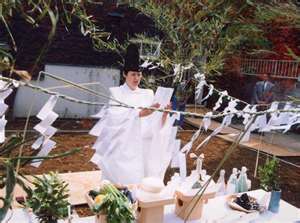
Pat Ormsby performing the jichinsai earthbreaking ceremony
Another Kyriacou incident involved spiritual cleansing, much in the way that Shinto priests perform purification on houses by reciting Norito for their vibrational effect and waving the haraigushi wand through the air to dispel negative energy In this case Kyriacou sensed a lingering residue from previous occupants, which needed to be cleared by a special ceremony.
Again this made me think of how traditionally Japanese have been reluctant to buy second-hand houses or wear second-hand clothes because of the lingering trace of others. In the case of Shinto there are various taboos surrounding contact with the dead for similar reasons. It’s in keeping with the widespread notion in the West that something of the deceased clings to their clothes and possessions, and why we are so fond of keepsakes.
Videos of the House Whisperer can be seen at the following site. I recommend checking them out: at the very least, they will make you think… http://www.housewhisperer.com/
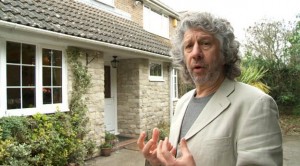
House Whisperer on the job (from the House Whisperer Facebook page)

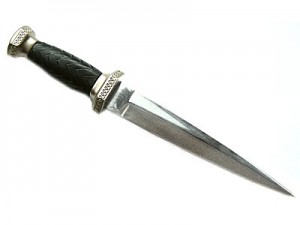
Leave a Reply